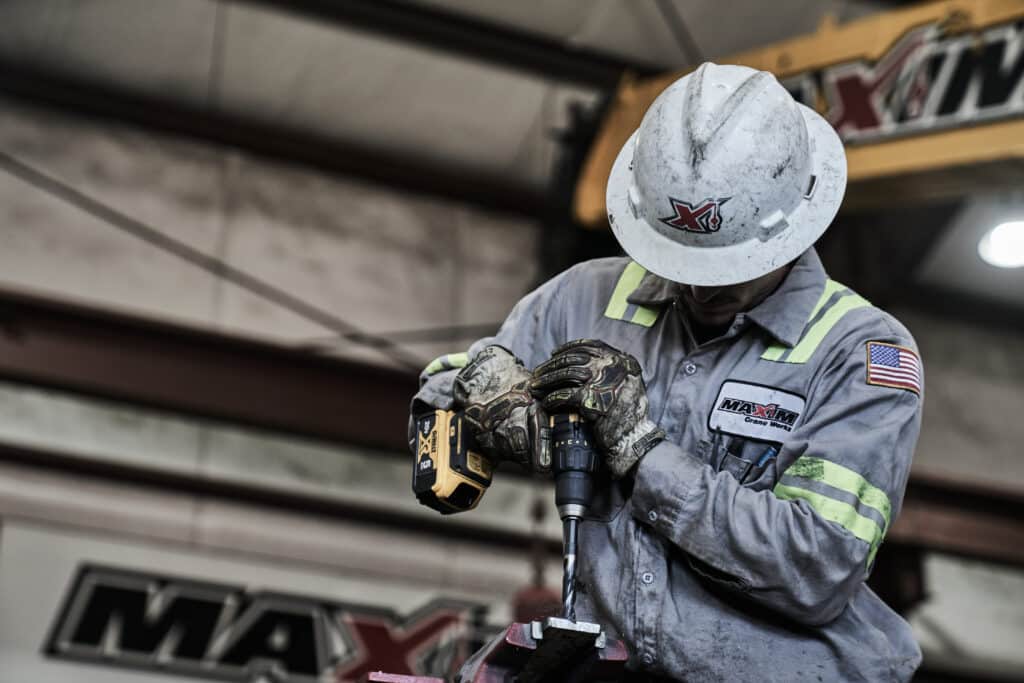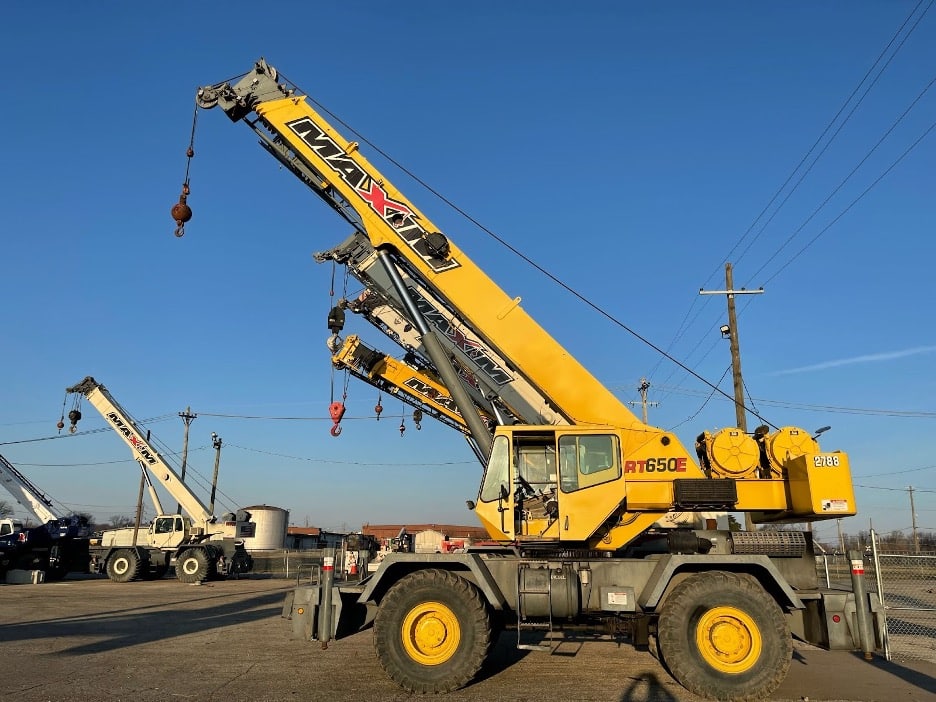Cranes are indispensable for industrial construction projects, infrastructure projects, and commercial construction projects. They offer the strength and reliability needed to lift heavy loads and streamline operations. Yet, purchasing a brand-new crane can be a major investment, especially when companies aim to balance capabilities with budget constraints. That’s why many turn to buying a used crane as a strategic option to achieve cost savings while still obtaining the lifting capacity they require.
However, the process of purchasing a used crane involves careful evaluation of factors such as model suitability, lifting capacity, condition, and service history. This guide provides insights into key factors to consider when purchasing cranes—from budgeting to maintenance records—so you can make a confident decision. Read on to discover practical advice that will help you select a quality crane aligned with both your operational needs and financial plan.
Budgeting for a Used Crane
Establishing a clear budget is a critical first step when buying a used crane. Determining your financial parameters guides you toward equipment that fits your project requirements without straining resources. By setting spending limits early, you can focus on machines that balance cost and dependability.
Several factors influence the price of a used crane, including crane type, model size, and lifting capacity. For instance, larger cranes or those with specialized features often come at higher costs. Additionally, a crane’s age, maintenance history, and previous usage can affect its price designation. An older crane with consistent servicing may provide more reliable performance than a newer model that lacked routine upkeep.
It’s also important to think about ancillary costs beyond the sticker price. These can include inspections, part replacements, and any required upgrades. If the crane needs specialized transport, plan for these logistics accordingly. Factoring all expenses into your budget can help you avoid financial surprises as your project progresses.
Finally, remember that prioritizing a machine with reliable maintenance records can reduce unplanned downtime. Even if it requires a slightly higher investment upfront, well-documented service logs often indicate the crane’s capacity to remain operational over a longer period.
Evaluating Lifting Capacity and Crane Models
Understanding your lifting requirements is vital when deciding on a used crane. Selecting equipment that surpasses your project’s highest lifting demands may increase costs, whereas choosing one below those demands can hinder productivity or require multiple lifts for heavier loads. Make sure to verify maximum weight requirements, lift heights, and boom radius.
Different crane models offer unique benefits. Hydraulic truck cranes excel in mobility and quick setup, making them suitable for projects that require frequent relocation. Crawler cranes provide exceptional stability on uneven ground but may need special transport arrangements. All-terrain cranes combine road travel convenience with off-road capabilities, offering versatility for various applications.
Also consider how often you’ll move the crane between job sites. A project spanning multiple locations might favor a more mobile model, while a long-term stationary project could benefit from a crane renowned for its robust lift capacity. If additional guidance is needed to match crane models to project needs, see selecting the right crane for your project.
Assessing the Crane’s History
A crane’s previous usage and documented service can reveal its long-term viability. Start by reviewing operational hours, which offer clues about its overall wear. Low hours combined with regular maintenance records often indicate dependable performance. On the other hand, heavy use without consistent service may translate to higher future repair costs.
Additionally, consider where the crane was operated. Harsh environments—like those with extreme climates—can accelerate wear. Equipment that has undergone scheduled inspections or has thorough records of part replacements is usually more reliable. If service logs contain consistent updates and show timely part replacements, you’re more likely to secure a crane that can smoothly integrate into your existing operations.
Inspecting the Condition of the Crane
While documented history is essential, a hands-on inspection can confirm whether the crane is truly in good condition. Check for any visible issues such as corrosion, cracks, or dents on the boom, jib, and undercarriage. Confirm there are no significant leaks in hydraulic systems and evaluate any signs of wear on cables, hooks, or winches.
Listening for unusual sounds in gearboxes or slewing mechanisms can reveal alignment or lubrication problems. For any crane with tracks, inspecting the condition of track shoes, rollers, or chains is crucial. Evaluating these elements—along with onboard electronics—helps you gauge whether the crane can deliver consistent performance over time.
Considering Ongoing Maintenance Requirements
Maintenance is a continuous responsibility, especially when you want to prolong the crane’s working lifespan. If your team has experience with a particular model, transitioning to a used unit with the same or similar systems may be simpler. However, an unfamiliar model might require external specialists for support, which can affect your budgeting and scheduling.
Some used cranes may come with recent upgrades, lowering short-term maintenance needs. Conversely, a crane lacking upkeep may require immediate attention. Assess these requirements to determine if they fit your operational capacity. If you do find a crane with a reliable maintenance record, be sure to ask about the service provider’s experience. Service providers with extensive technical knowledge of the product can provide ongoing support and help keep the crane operational.
Additional Practical Considerations
Transportation and Logistics
In addition to assessing lifting specifications, think about how you’ll transport the crane from one location to another. A hydraulic truck crane generally can travel on public roads without significant modification, but crawler cranes and other large units often need disassembly and specialized hauling. Planning ahead for potential trailer equipment is wise.
Project Timelines and Usage Duration
Before purchasing, determine whether your needs are long-term or short-term. In some cases, renting equipment from crane rental services might provide a better return, especially if the crane will only be used occasionally or for a brief period. For ongoing or repeated use, buying can be more cost-effective.
Balancing Current and Future Needs
A crane that meets current workloads but still offers room for future requirements can guard against having to invest in additional machinery soon. For instance, if your operation might expand or move to bigger worksites, it’s practical to look for a crane with a versatile range of capacity—one that won’t quickly become obsolete in your fleet.
Brand Availability and Parts Support
When exploring different used crane options, factor in brand reputation and the ease of acquiring replacement parts. Certain manufacturers have extensive support networks that simplify locating components and scheduling repairs. A brand that is widely recognized within the industry often benefits from established dealerships or suppliers. This can reduce the time spent searching for compatible parts, leading to more consistent equipment availability. If your operation depends on quick turnarounds, a crane from a manufacturer with robust parts support might be an attractive investment. Taking these elements into account can streamline future maintenance needs and help maintain steady project timelines.
Why Choose a Reputable Provider

When purchasing a used crane, the company you buy from is a major factor in your long-term satisfaction. A reputable provider, such as Maxim Crane Works, offers knowledgeable support regarding parts availability and maintenance. This level of expertise and openness can streamline your buying process, helping you confirm the crane aligns with your performance goals.
Moreover, providers who routinely service their fleets often have equipment that integrates well into diverse job sites. It highlights a commitment to consistent upkeep rather than selling machines “as is.” This attention to quality can translate into minimized downtime once the crane is deployed in your operation.
Strategic Benefits of Purchasing a Used Crane
Buying a Used Crane can be a strategic choice for meeting heavy lifting demands without placing undue pressure on your budget. From setting clear spending parameters and selecting the right capacity to auditing the crane’s service records, each step allows you to confirm the equipment aligns with your project goals. Thoroughly reviewing documentation and completing a physical inspection also adds confidence that you’re getting a reliable machine.
If you’re ready to explore top-tier options, check out Maxim Crane’s used crane inventory for a well-maintained selection of used cranes. Their industry knowledge and commitment to professional service can help you make a purchase that meets current requirements while anticipating future project needs.


